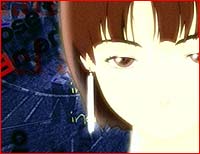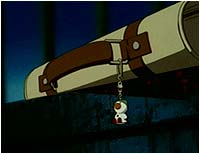|
 In 1969, the year that saw the first steps of men on the moon, was the birth of a concept that over the next thirty years would become the standard of human communication in the 21st century. This was the ARPANET, a U.S. Department of Defense research venue that explored how to most economically use the then-scarce high-performance computer resources. As originally imagined, ARPANET's major use would be to support what is now called remote login and more sophisticated forms of distributed computing, but the fledgling technology of electronic mail quickly grew to dominate actual usage. Universities, research labs, and defense contractors discovered this network's potential as a medium of communication between humans early on and linked up in steadily increasing numbers, connecting together a quirky mix of academics, techies, hippies, SF fans, hackers, and anarchists. In the early 1980s, the advent of TCP/IP (Transmission Control Protocol/Internet Protocol), which allows inexpensive cross-platform information exchange such as between an Apple Macintosh and an Intel Pentium-based computer or a Sun workstation or any other machine that has the TCP/IP protocol running on it, and DNS (Domain Name Service), which maps computer names and domains ("atanime.com", for example) to numeric network addresses, this collection of interconnected networks--with the old ARPANET at its core — started to be referred to as the Internet. In 1969, the year that saw the first steps of men on the moon, was the birth of a concept that over the next thirty years would become the standard of human communication in the 21st century. This was the ARPANET, a U.S. Department of Defense research venue that explored how to most economically use the then-scarce high-performance computer resources. As originally imagined, ARPANET's major use would be to support what is now called remote login and more sophisticated forms of distributed computing, but the fledgling technology of electronic mail quickly grew to dominate actual usage. Universities, research labs, and defense contractors discovered this network's potential as a medium of communication between humans early on and linked up in steadily increasing numbers, connecting together a quirky mix of academics, techies, hippies, SF fans, hackers, and anarchists. In the early 1980s, the advent of TCP/IP (Transmission Control Protocol/Internet Protocol), which allows inexpensive cross-platform information exchange such as between an Apple Macintosh and an Intel Pentium-based computer or a Sun workstation or any other machine that has the TCP/IP protocol running on it, and DNS (Domain Name Service), which maps computer names and domains ("atanime.com", for example) to numeric network addresses, this collection of interconnected networks--with the old ARPANET at its core — started to be referred to as the Internet.
 In 1994 came the revelation that allowed the layman computer user to use all the Internet had at its disposal: the World Wide Web, or simply, the Web. No longer was Internet access limited to those who knew the arcana of Unix, that operating system originating from Bell Labs and developed and upgraded in the early 1970s out of the dreams of college and university computer science and engineering students, and today the software backbone of the Internet itself. Now everyone, from businessmen and housewives to grade-schoolers and pre-information age seniors could all sit down and explore the vast storehouse of knowledge alongside those who were steeped in computer lore. As the last year of the 20th century approaches, it is hard to imagine not having an e-mail address or not reading stock quotes from a host of web sites, or even something as simple as not being able to buy a book online (Ed: or reading this fine Web publication). Computer use worldwide has become so commonplace in the business and home that conscious awareness of the fact begins to slip into the unconscious. Consider: In the 1980s it was novel to hear of a couple who met and fell in love "online," where the sweetness of their emotions had to be conveyed by something as crude as typewritten text. As the 1990s fade, such online acquaintances are numerous, and to be sure met with varying degrees of success, but the important point is that people are aware of each other in a way that has changed human civilization for all time: people have become intimately connected without even leaving their desk. In 1994 came the revelation that allowed the layman computer user to use all the Internet had at its disposal: the World Wide Web, or simply, the Web. No longer was Internet access limited to those who knew the arcana of Unix, that operating system originating from Bell Labs and developed and upgraded in the early 1970s out of the dreams of college and university computer science and engineering students, and today the software backbone of the Internet itself. Now everyone, from businessmen and housewives to grade-schoolers and pre-information age seniors could all sit down and explore the vast storehouse of knowledge alongside those who were steeped in computer lore. As the last year of the 20th century approaches, it is hard to imagine not having an e-mail address or not reading stock quotes from a host of web sites, or even something as simple as not being able to buy a book online (Ed: or reading this fine Web publication). Computer use worldwide has become so commonplace in the business and home that conscious awareness of the fact begins to slip into the unconscious. Consider: In the 1980s it was novel to hear of a couple who met and fell in love "online," where the sweetness of their emotions had to be conveyed by something as crude as typewritten text. As the 1990s fade, such online acquaintances are numerous, and to be sure met with varying degrees of success, but the important point is that people are aware of each other in a way that has changed human civilization for all time: people have become intimately connected without even leaving their desk.
 One night in October of 1998, the author was relaxing in a room at the Westin Osaka after a day of traveling around Kyoto visiting various temples. It had been raining out, which lent the color of Osaka's night lighting a peculiar aspect of clarity as the water on the roadways reflected the lights. Next to the hotel is the impressive Umeda Sky Building, a pair of 170 meter tall towers connected by a wide span at the top. The light show that played out from this span was constantly shifting, looking very like something from Close Encounters of the Third Kind. The interesting point to note is that the building itself was not in the field of view from the room's window, but the reflections of the lights on everything in the area was easily visible. The hotel room itself was done in an ultramodern and very elegant black marble and gold trim motif. With the giant bay window looking out over the cityscape of distant reflections, one could not help feel just a little like the subject of a Syd Mead painting. It was about 1:30 in the morning, and the television started showing one of the late-night anime programs. The show's title was Serial Experiments Lain, and right away one could tell that this was not born from any of the ordinary anime plot structures. (It is, in fact, the anime realization of a video game for the Sony Playstation.) On the surface, the show appears to describe the efforts of a junior high school girl Iwakura Lain as she gains an interest in the online lifestyle, but ultimately what the show reveals goes well beyond such superficial themes as online activities and the habits and desires of a schoolgirl. One night in October of 1998, the author was relaxing in a room at the Westin Osaka after a day of traveling around Kyoto visiting various temples. It had been raining out, which lent the color of Osaka's night lighting a peculiar aspect of clarity as the water on the roadways reflected the lights. Next to the hotel is the impressive Umeda Sky Building, a pair of 170 meter tall towers connected by a wide span at the top. The light show that played out from this span was constantly shifting, looking very like something from Close Encounters of the Third Kind. The interesting point to note is that the building itself was not in the field of view from the room's window, but the reflections of the lights on everything in the area was easily visible. The hotel room itself was done in an ultramodern and very elegant black marble and gold trim motif. With the giant bay window looking out over the cityscape of distant reflections, one could not help feel just a little like the subject of a Syd Mead painting. It was about 1:30 in the morning, and the television started showing one of the late-night anime programs. The show's title was Serial Experiments Lain, and right away one could tell that this was not born from any of the ordinary anime plot structures. (It is, in fact, the anime realization of a video game for the Sony Playstation.) On the surface, the show appears to describe the efforts of a junior high school girl Iwakura Lain as she gains an interest in the online lifestyle, but ultimately what the show reveals goes well beyond such superficial themes as online activities and the habits and desires of a schoolgirl.
 The show's opening titles are intriguing, as they show Lain walking through a shifting series of backgrounds and situations underpinned by music very suggestive of a Suzanne Vega or Sheryl Crow ballad, and often Lain appears in such scenes as the character on a TV screen, seeming to interact with the people in the room. The final opening title scene shows Lain losing her cap in a gust of wind, but then the scene freezes, becoming somewhat like an old photograph, save for Lain who walks away after a moment, leaving the cap suspended in the air and giving the viewer the first taste of the flexible reality of her world. The show's opening titles are intriguing, as they show Lain walking through a shifting series of backgrounds and situations underpinned by music very suggestive of a Suzanne Vega or Sheryl Crow ballad, and often Lain appears in such scenes as the character on a TV screen, seeming to interact with the people in the room. The final opening title scene shows Lain losing her cap in a gust of wind, but then the scene freezes, becoming somewhat like an old photograph, save for Lain who walks away after a moment, leaving the cap suspended in the air and giving the viewer the first taste of the flexible reality of her world.
 The story itself begins with a young girl, Yomoda Chisa, at first seen doubled over in despair in a Tokyo alley and next seen standing precariously on the edge of a building's roof, grasping the handrail while trying to decide something. The depression of her existence seems suddenly to lift as her expression resolves into one of freedom, and indeed she looks much like a bird about to take flight as she comes to a decision and lets go of the railing -- only to fall a dozen stories to her death in what appears to be suicide. Things are not this final, however. At school the next day, one girl is driven to tears as she receives an e-mail from the dead girl. On closer observation, the classmates soon discover that everyone received the same e-mail. When asked if she received it too, Lain answers "I don't check my e-mail," whereupon her friend Alice says she should check her e-mail everyday. Later, Lain is sitting quietly in her room contemplating, and then asks her father for a new Navi, which surprises and amuses the man. "So you've finally caught the bug, eh?" he muses. Later, as Lain gets used to her new Navi, Chisa starts talking to her from out of the iridescent wash of data on the display screen. In response to Lain's question about the girl's death, Chisa replies, "If you can overcome the fear, you'll find that you don't need your body here." And when Lain asks why she would want to be there, Chisa says, "Because God exists here." The story itself begins with a young girl, Yomoda Chisa, at first seen doubled over in despair in a Tokyo alley and next seen standing precariously on the edge of a building's roof, grasping the handrail while trying to decide something. The depression of her existence seems suddenly to lift as her expression resolves into one of freedom, and indeed she looks much like a bird about to take flight as she comes to a decision and lets go of the railing -- only to fall a dozen stories to her death in what appears to be suicide. Things are not this final, however. At school the next day, one girl is driven to tears as she receives an e-mail from the dead girl. On closer observation, the classmates soon discover that everyone received the same e-mail. When asked if she received it too, Lain answers "I don't check my e-mail," whereupon her friend Alice says she should check her e-mail everyday. Later, Lain is sitting quietly in her room contemplating, and then asks her father for a new Navi, which surprises and amuses the man. "So you've finally caught the bug, eh?" he muses. Later, as Lain gets used to her new Navi, Chisa starts talking to her from out of the iridescent wash of data on the display screen. In response to Lain's question about the girl's death, Chisa replies, "If you can overcome the fear, you'll find that you don't need your body here." And when Lain asks why she would want to be there, Chisa says, "Because God exists here."
 From this point begins the evolution of Lain from a seemingly ordinary schoolgirl into what can only be described as the first entity in a new order of consciousness. Indeed, often throughout the story arc it becomes difficult to discern in which world she exists. Is Lain just a girl, or is she something more? This writer feels at times as if Lain were an incarnation of Gulliver Foyle, that mundane spaceman from Alfred Bester's classic science-fiction novel The Stars My Destination. Lain, like Foyle, is standing at a crossroads in human evolution, awaiting a singular event to "kickstart" the latent capacity buried within the human psyche and produce the next level of human existence. Author Lester del Rey alluded to this in his short story Kindness, where it has been determined that the next evolutionary step in humans will not be a physical one, but purely a mental one. From this point begins the evolution of Lain from a seemingly ordinary schoolgirl into what can only be described as the first entity in a new order of consciousness. Indeed, often throughout the story arc it becomes difficult to discern in which world she exists. Is Lain just a girl, or is she something more? This writer feels at times as if Lain were an incarnation of Gulliver Foyle, that mundane spaceman from Alfred Bester's classic science-fiction novel The Stars My Destination. Lain, like Foyle, is standing at a crossroads in human evolution, awaiting a singular event to "kickstart" the latent capacity buried within the human psyche and produce the next level of human existence. Author Lester del Rey alluded to this in his short story Kindness, where it has been determined that the next evolutionary step in humans will not be a physical one, but purely a mental one.
The central theme of Lain is the evolution of the collection of interconnected networks referred to as the "Wired". The Wired can be accessed using a computer hardware/software combination known as "Navi," ostensibly short for navigator. While seemingly no different from the traditional concept of the Internet, the software layer which the Wired uses is the cryptically named "Protocol 6". It may be of interest to note that the internet uses "IPv4", that is, Internet Protocol version 4, and plans are already underway to implement IPv6 (yes, Protocol 6) as the need for new internet addresses becomes more common. The Wired Protocol 6 functions like TCP/IP does for the traditional Internet, allowing computers of any architecture to connect to each other using a common data packet exchange framework. The point to note, however, is that these exchanges occur below the visible level. People are not aware of how their information is exchanged.
 The anomaly with Protocol 6, however, is that during its development a software engineer experimentally coded in a structure to utilize the resonant frequency of the Earth and its subtle effect on humans. (The Earth does have a fundamental frequency, incidentally.) The manner in which this is actually achieved is not made clear — though references are made to experiments on the latent psionic power dormant in children, a sort of Mass Cathexis where the negligible "psi" energy present in each subject was collected en masse with the result being a high concentration of power. Except others discovered the presumably-destroyed data from these abandoned experiments, and now the Wired is beginning to use this refined application of the data. The anomaly with Protocol 6, however, is that during its development a software engineer experimentally coded in a structure to utilize the resonant frequency of the Earth and its subtle effect on humans. (The Earth does have a fundamental frequency, incidentally.) The manner in which this is actually achieved is not made clear — though references are made to experiments on the latent psionic power dormant in children, a sort of Mass Cathexis where the negligible "psi" energy present in each subject was collected en masse with the result being a high concentration of power. Except others discovered the presumably-destroyed data from these abandoned experiments, and now the Wired is beginning to use this refined application of the data.
 Golden Age science fiction author Henry Kuttner once used the same concept of compelling connectedness in his bizarre and quite believable short story "Nothing But Gingerbread Left". As far back as the Middle Ages, there have been historical notes on how every now and then groups of people felt compelled to dance and move in rhythmic ways until they literally fainted from exhaustion. Kuttner devised a sort of word-thought formula that once learned, pricked at the unconscious enough to distract the conscious mind and invite a kind of mass compulsion to recite the formula to the exclusion of all else. Kuttner's characters, living in the World War II era, decide to end the war in their own way -- they write a compulsive word formula in German, and somehow the German troops learn a new marching song. Golden Age science fiction author Henry Kuttner once used the same concept of compelling connectedness in his bizarre and quite believable short story "Nothing But Gingerbread Left". As far back as the Middle Ages, there have been historical notes on how every now and then groups of people felt compelled to dance and move in rhythmic ways until they literally fainted from exhaustion. Kuttner devised a sort of word-thought formula that once learned, pricked at the unconscious enough to distract the conscious mind and invite a kind of mass compulsion to recite the formula to the exclusion of all else. Kuttner's characters, living in the World War II era, decide to end the war in their own way -- they write a compulsive word formula in German, and somehow the German troops learn a new marching song.
 A particularly disturbing moment in Lain occurs when the Wired protocol is indeed changed, and viewers see Lain's sister miming the actions of dialing a telephone number and subsequently making the sounds of a failed data connection. It took some time to comprehend what had happened: she missed the protocol change, and her "mental modem" can no longer connect. One can only fervently wish that this is not ultimately in store for the users of the Internet -- that if one misses the next step that means missing everything thereafter and the resulting inability to understand what has gone before. Of course, the internet is a rather irascible child when compared to the Wired. Even with the most modern microwave and fiber-optic connections, information still gets delayed, lost or misrouted due to everything from downed phone lines to failing computer hardware to buggy software or even non-technological events like sunspots or one's pet cat knocking a phone off the hook and causing a modem connection to drop. The Wired has evolved past this primitive state, to the point where bandwidth is sufficient to support consciousness. A particularly disturbing moment in Lain occurs when the Wired protocol is indeed changed, and viewers see Lain's sister miming the actions of dialing a telephone number and subsequently making the sounds of a failed data connection. It took some time to comprehend what had happened: she missed the protocol change, and her "mental modem" can no longer connect. One can only fervently wish that this is not ultimately in store for the users of the Internet -- that if one misses the next step that means missing everything thereafter and the resulting inability to understand what has gone before. Of course, the internet is a rather irascible child when compared to the Wired. Even with the most modern microwave and fiber-optic connections, information still gets delayed, lost or misrouted due to everything from downed phone lines to failing computer hardware to buggy software or even non-technological events like sunspots or one's pet cat knocking a phone off the hook and causing a modem connection to drop. The Wired has evolved past this primitive state, to the point where bandwidth is sufficient to support consciousness.
 Lain goes far beyond the technological concept of being connected. The core philosophy of the show is the connectedness of all things. "History," says Lain, "is just a connected series of events. No, they were forced to connect." Contrast this with the now-classic Connections science documentary series hosted by James Burke, wherein Burke painstakingly describes how, by connecting important events, people, and inventions the end product of a particular facet of human genius can be traced to the most inauspicious of roots. Indeed the technology aspect of Lain is a little daunting, bringing to mind mathematician and author Vernor Vinge's masterwork Marooned in Realtime, in which Vinge describes the rate of evolution of technology progressing at such a fantastic pace that by the early 21st century, the curve becomes asymptotic and humanity disappears. What happens to them is never known. It is only speculated that they opened the door to a new world and everyone was compelled to step through and close the door on the old world. "With radio and television," said Lain's father to her in a vision, "the door to the new world was first opened." Lain goes far beyond the technological concept of being connected. The core philosophy of the show is the connectedness of all things. "History," says Lain, "is just a connected series of events. No, they were forced to connect." Contrast this with the now-classic Connections science documentary series hosted by James Burke, wherein Burke painstakingly describes how, by connecting important events, people, and inventions the end product of a particular facet of human genius can be traced to the most inauspicious of roots. Indeed the technology aspect of Lain is a little daunting, bringing to mind mathematician and author Vernor Vinge's masterwork Marooned in Realtime, in which Vinge describes the rate of evolution of technology progressing at such a fantastic pace that by the early 21st century, the curve becomes asymptotic and humanity disappears. What happens to them is never known. It is only speculated that they opened the door to a new world and everyone was compelled to step through and close the door on the old world. "With radio and television," said Lain's father to her in a vision, "the door to the new world was first opened."
 The presentation of Serial Experiments Lain is quite psychedelic, a sort of "ultimate trip" in the same essence as 2001: A Space Odyssey was billed during its original release. At times the show has the sharp, acerbic, and outrageously bizarre aspect of such films as Liquid Sky. At other times, the show seems so similar to the Hollywood blockbuster film The Matrix that one has to pause and remember that Lain predates Matrix by almost a year. Even so, both stories expound on the reality of existence, albeit from opposite angles. Or perhaps they are the same angles. It depends upon one's point of view. The presentation of Serial Experiments Lain is quite psychedelic, a sort of "ultimate trip" in the same essence as 2001: A Space Odyssey was billed during its original release. At times the show has the sharp, acerbic, and outrageously bizarre aspect of such films as Liquid Sky. At other times, the show seems so similar to the Hollywood blockbuster film The Matrix that one has to pause and remember that Lain predates Matrix by almost a year. Even so, both stories expound on the reality of existence, albeit from opposite angles. Or perhaps they are the same angles. It depends upon one's point of view.
Serial Experiments Lain was originally broadcast on TV Tokyo during the Summer of 1998 and was re-broadcast in the fall of 1998. The show comprises thirteen episodes, each titled with a theme "layer," as in a software layer. (As software layers accumulate, they become more abstract, and one might argue the same is true with Lain). The first episode, for instance is Layer 01: Weird, an anagram of Wired. Director Nakamura Ryutaro expertly visualizes each episode, and the intense visual styling does much to cover for the admittedly simplistic art. The series is available on VHS, LD and DVD in Japan and VHS and DVD in North America from Pioneer. The first DVD or tape contains the first four episodes, and the next three DVD or tapes each contain three episodes.

|
